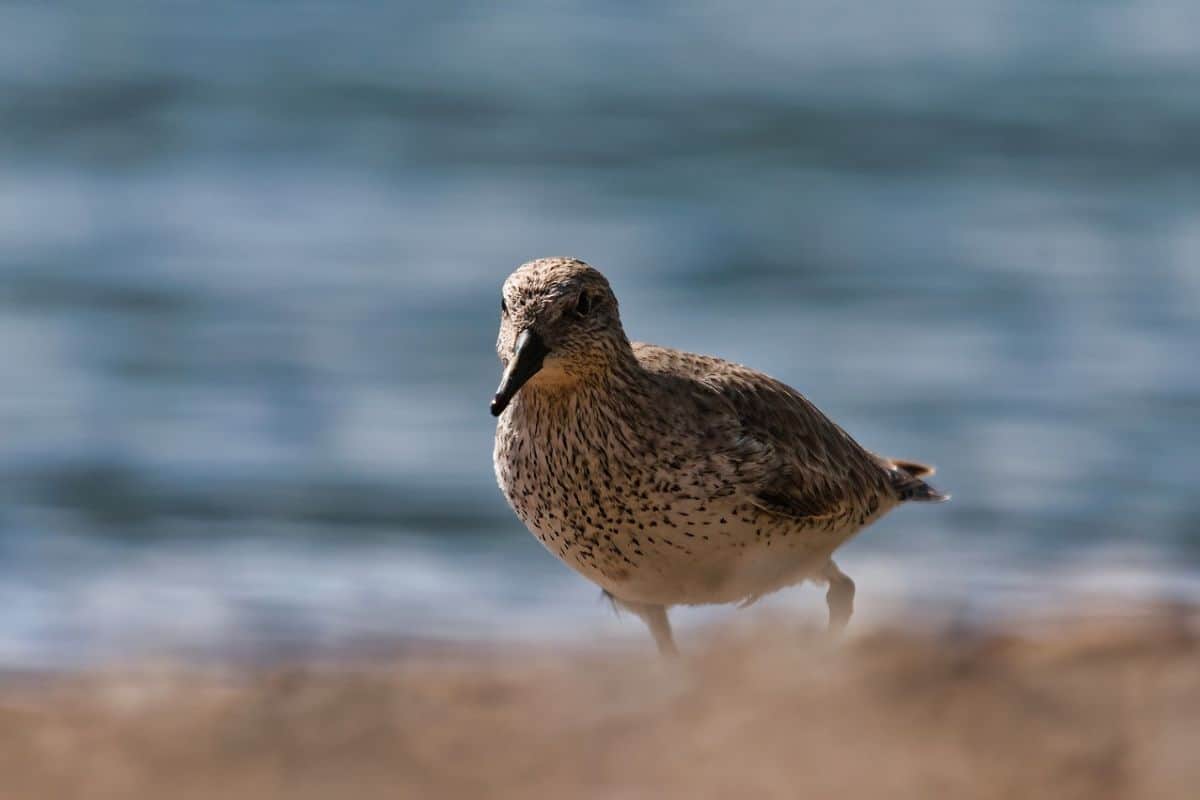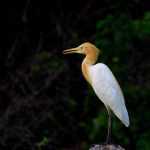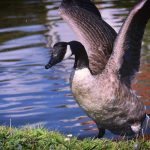Common Name: Red Knot
Scientific Name: Calidris canutus| Size | Diet | Range in Hawaii | Status in Hawaii |
|---|---|---|---|
| 9 in. - 11 in. | mollusks, crustaceans, worms, and insects | O'ahu, Moloka'i, Maui, and Big Island | Near Threatened |
The Red Knot (Calidris canutus) is a medium-sized shorebird known for its striking orange-red plumage during the breeding season. This bird species is a long-distance migrant, breeding in the high arctic tundra and wintering in coastal areas of South America, Africa, Australia, and Asia.
The Red Knot has also been spotted in Hawaii, where it is a rare but occasional visitor to the islands. In this article, we’ll take a closer look at the Red Knot and explore its remarkable characteristics and behaviors, as well as its presence in the beautiful and diverse ecosystem of Hawaii.
Red Knot
Appearance
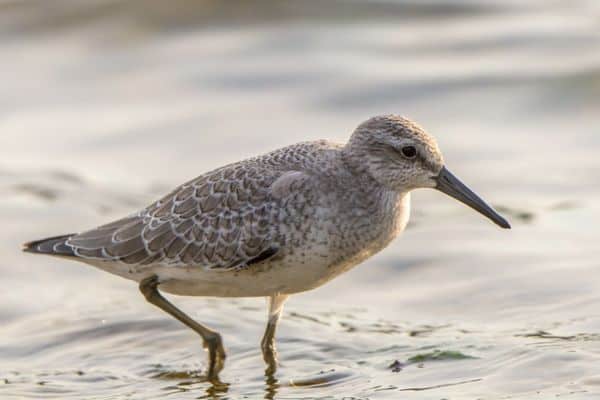
The Red Knot is a medium-sized shorebird known for its distinctive appearance. It measures around 9-11 inches in length, showcasing a compact body with a short, straight bill and long, slender legs.
Its plumage varies depending on the season, ranging from a reddish-brown color during breeding to a grayish-brown hue during non-breeding periods. The bird’s chest and underparts exhibit a mottled pattern, while its wings display a combination of pale and dark feathers.
Diet
The Red Knot has a specialized diet primarily consisting of invertebrates. It feeds on a variety of marine creatures, including mollusks, crustaceans, worms, and insects.
One of its favorite food sources is the tiny horseshoe crab eggs found along coastal areas during migration. With its long bill, the Red Knot probes the sand and mud for prey, using a unique method known as “run and peck” to capture and consume its food.
This bird’s ability to adapt its diet based on seasonal availability allows it to sustain its energy levels for long-distance migrations and breeding activities.
Nesting
The Red Knot is a ground-nesting bird that typically breeds in the Arctic tundra regions. The female constructs a shallow depression in the ground, lined with vegetation, feathers, and other materials.
She lays a clutch of four eggs, which are pale olive or buff-colored with dark speckles. Both the male and female take turns incubating the eggs for about three to four weeks until they hatch.
Once the chicks hatch, they are precocial, meaning they are relatively independent and able to move around shortly after birth. The parents provide protection and guidance to the chicks, helping them find food and navigate their surroundings. The nesting period is crucial for the Red Knot’s reproductive success, as it sets the stage for the growth and development of the next generation of birds.
Behavior

The Red Knot exhibits fascinating behavior as it navigates its annual migratory journey and forages for food along the coasts. Highly social birds, Red Knots often gather in large flocks during migration and wintering periods. These flocks can consist of hundreds or even thousands of individuals, creating an impressive spectacle.
During migration, Red Knots undertake remarkable long-distance flights, covering thousands of miles as they travel between breeding grounds in the Arctic tundra and wintering areas in more temperate regions. They are known for their incredible endurance and ability to fly non-stop for long periods, fueled by their efficient metabolism and ability to extract energy from their specialized diet.
Foraging behavior is another intriguing aspect of the Red Knot’s behavior. They have a unique feeding technique called “knotting,” where they run rapidly along the shoreline, probing the sand and mud with their bills.
This probing action helps them locate and extract small invertebrates, such as worms, mollusks, and crustaceans, which make up a significant part of their diet. They have adapted to feed on different types of prey, using their long bills to probe deep into the substrate.
During the breeding season, Red Knots display territorial behavior, defending their nesting sites from intruders. Males engage in courtship displays to attract females, involving wing-flapping, posturing, and vocalizations. Pair bonding occurs, and the male and female work together to build a nest and incubate the eggs.
In addition to their migratory and foraging behavior, Red Knots are known for their incredible resilience and adaptability. They can adjust their breeding times and migratory routes in response to environmental conditions and changes in food availability. Their behavior showcases their remarkable ability to survive and thrive in different habitats, making them a truly remarkable species.
Habitat
The Red Knot is a highly adaptable bird that can be found in a variety of habitats along its extensive migratory range. During the breeding season, they inhabit the Arctic tundra, where they build their nests on the ground in open, sparsely vegetated areas. The tundra provides them with suitable nesting sites and an abundance of insects and other arthropods for feeding their young.
During migration, Red Knots can be observed in various coastal habitats, including sandy beaches, mudflats, estuaries, and saltmarshes. These habitats are rich in the invertebrates that make up their primary food source. They are often seen probing the sand and mud, searching for worms, small crustaceans, mollusks, and other prey items.
In the wintering grounds, Red Knots can be found in a range of coastal habitats, including sandy beaches, rocky shores, and coastal wetlands. They are known to rely on intertidal zones and shallow waters where they can continue their foraging activities and find ample food resources.
In Hawaii, the Red Knots can be seen in the diverse coastal ecosystems of the islands. They utilize the sandy beaches, tidal flats, and coastal wetlands as they rest, forage, and prepare for their continued migration. The availability of suitable habitat and food resources in Hawaii makes it an important stopover location for these remarkable birds during their long journeys.
Range
The Red Knot, a Holarctic species, is occasionally seen in Hawaii during its migration. While its presence is rarer during the winter and spring, it can be observed as fall transients.
Records indicate sightings in the Northwestern Hawaiian Islands and the Southeastern Hawaiian Islands, including O’ahu, Moloka’i, Maui, and Hawai’i. Although not confirmed, populations from Wrangel Island through western Alaska and northeastern Siberia are believed to be potential sources for these Hawaii sightings.
Conservation Status
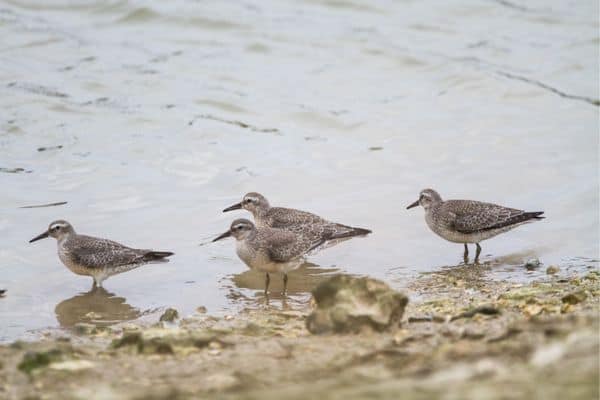
The Red Knot is a bird species that is of concern in terms of conservation. It is classified as “Near Threatened” on the IUCN Red List, indicating that it is approaching the risk of becoming endangered if conservation measures are not taken. The main threats to the Red Knot population are habitat loss and degradation, especially in their breeding and wintering grounds.
In the Arctic, where they breed, climate change poses a significant challenge. The melting of the Arctic ice affects the timing of their breeding season, which may lead to a mismatch between the availability of their insect prey and the hatching of their chicks. Additionally, disturbance from human activities, such as oil and gas exploration, can disrupt their nesting sites and impact their reproductive success.
Interesting Facts
1. Impressive long-distance migrations
The Red Knot holds the record for one of the longest migrations of any bird species, with some individuals traveling over 9,000 miles twice a year between their breeding grounds in the Arctic and their wintering areas in South America.
2. Phenomenal endurance
During their migrations, Red Knots undertake non-stop flights, fueled by fat reserves they accumulate prior to departure. This remarkable endurance allows them to fly for days without rest or food.
3. Acrobatic feeding style
Red Knots have a unique feeding technique called “probing.” They use their long, slender bills to probe into the mud or sand, seeking out small invertebrates such as mollusks, worms, and crustaceans.
4. Adaptation to Arctic conditions
Red Knots are highly adapted to the harsh Arctic environment. They have specialized feathers and a high metabolic rate, allowing them to withstand the freezing temperatures and breed in the tundra.
5. Use of magnetic fields for navigation
It is believed that Red Knots, like many migratory birds, rely on Earth’s magnetic fields to navigate during their long migrations.
Frequently Asked Questions
1. Are Red Knots social birds?
Red Knots are generally gregarious birds, especially during migration and in their wintering areas. They often gather in large flocks, foraging and resting together.
2. How long do Red Knots live?
Red Knots have been known to live for more than 20 years. However, their average lifespan is typically shorter, around 8-10 years.
3. How long can Red Knots fly without stopping?
During migration, Red Knots can undertake non-stop flights of up to thousand miles. They have the remarkable ability to fly for days without rest or food, relying on their fat reserves.
